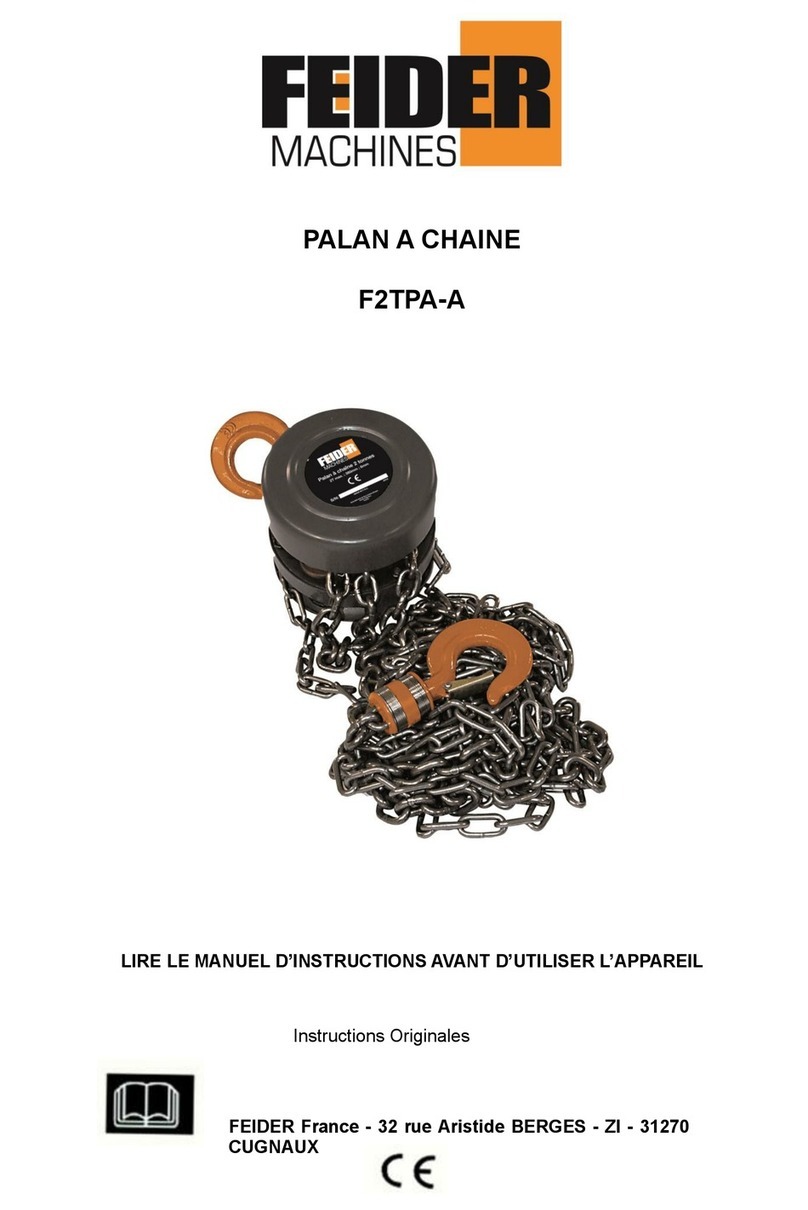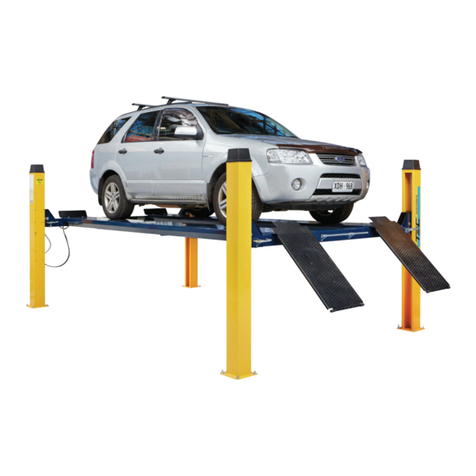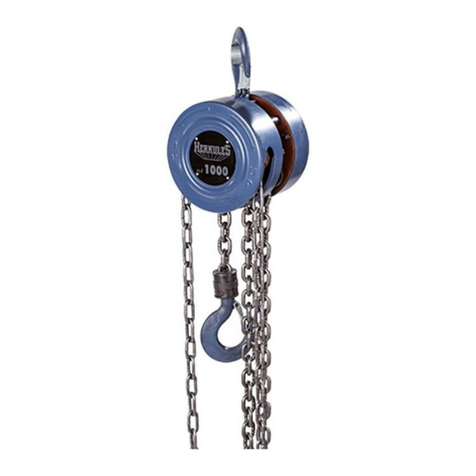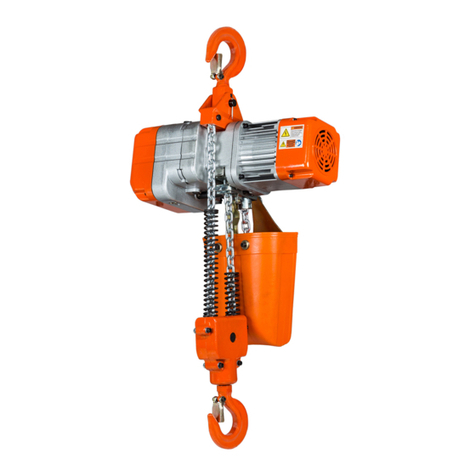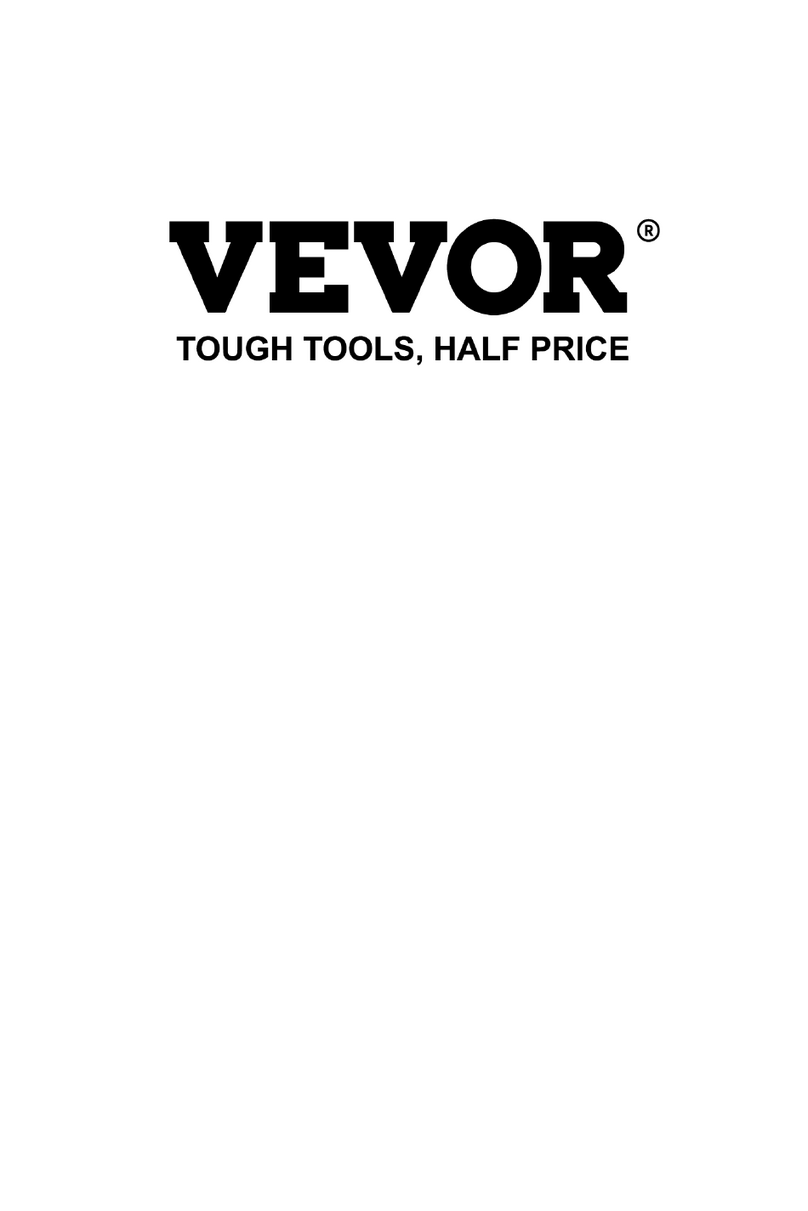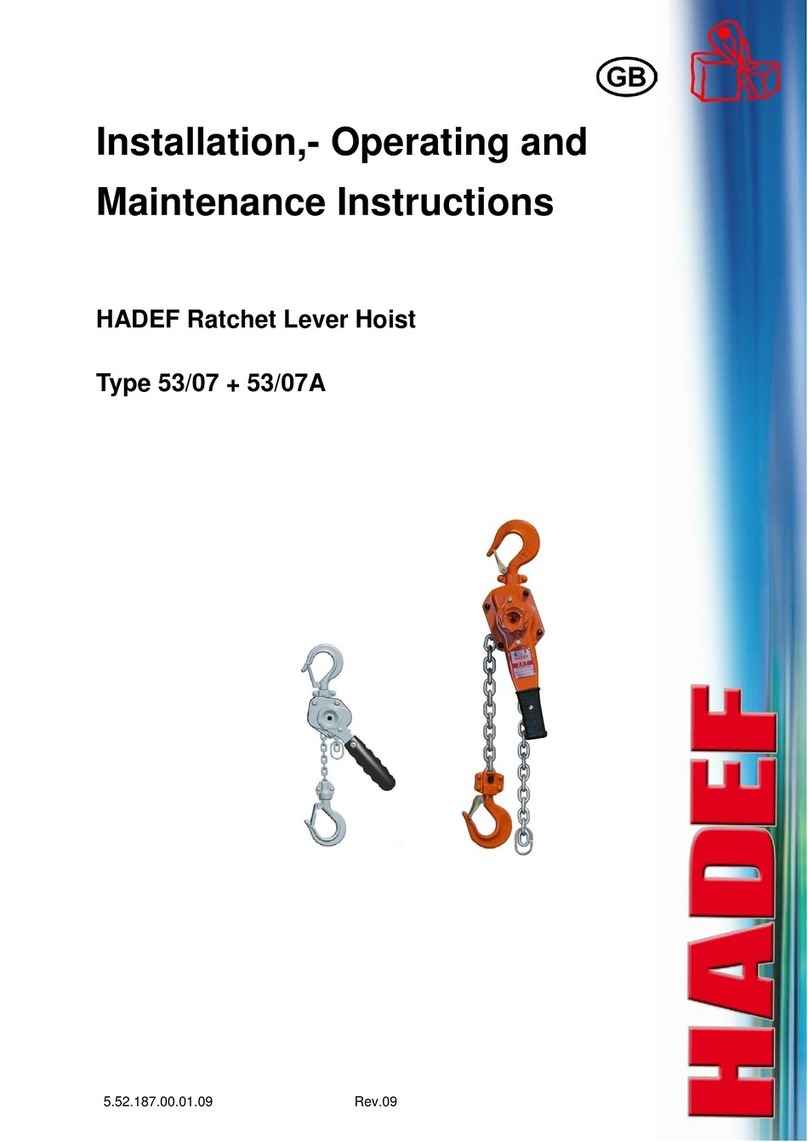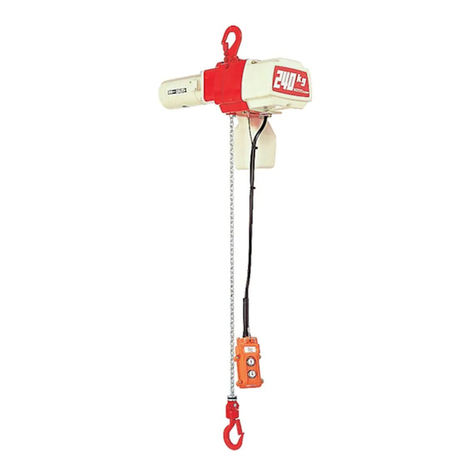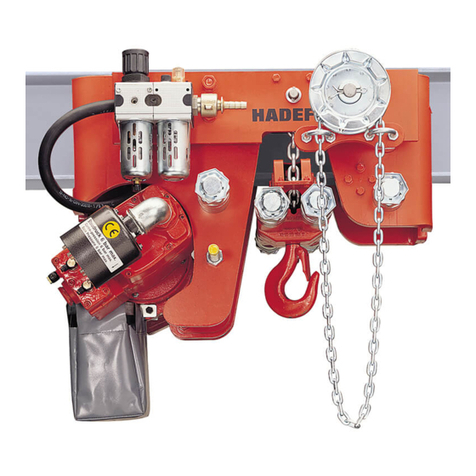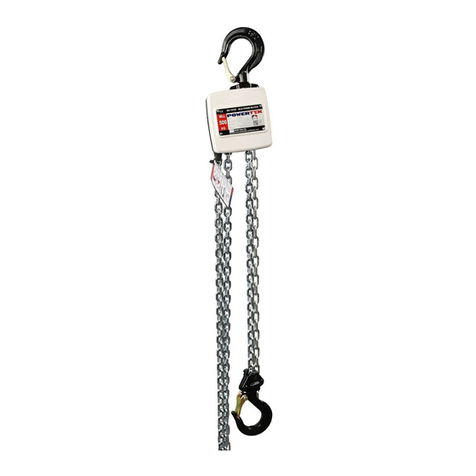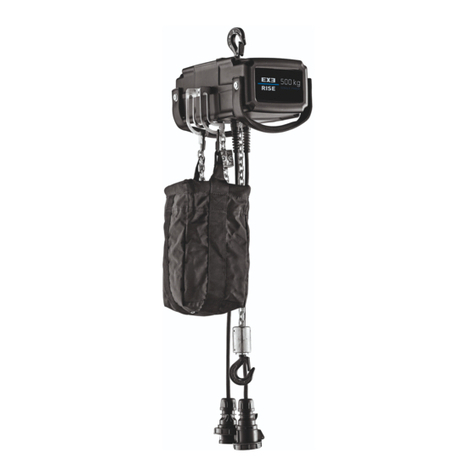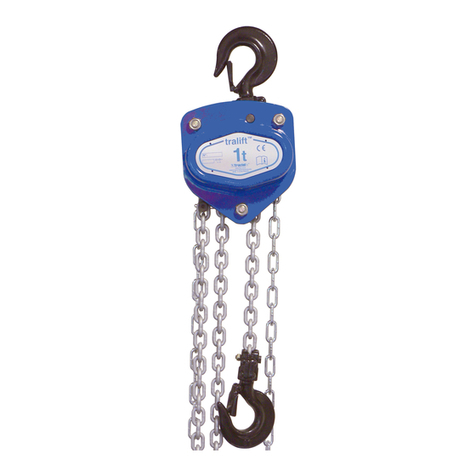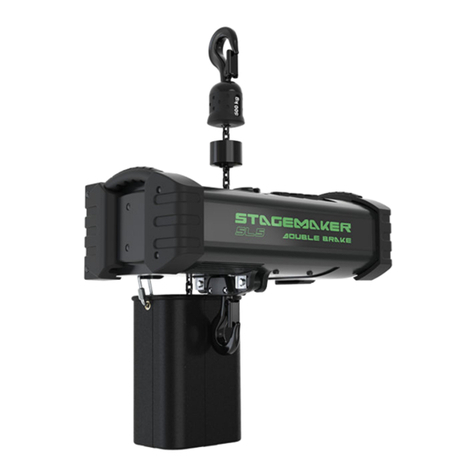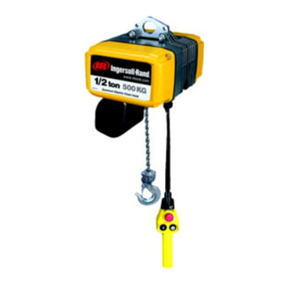
15 / 66
Before lifting, check for twists in the load chain. On single reeved chain hoist used in conjunction with
head blocks and ground support systems, check for twists between the hoist and head block. Twisted
load can result in a jammed chain and damage to the hoist.
On double reeved units a twist can occur if the lower hook block has been upturned between the
strands of chain. The hook should be reversed to remove the twist from the chain before operation.
A safe way of storage in order to avoid turns in the chain is to run the lift hook back to the hoist body,
or secure the hook to a fixing point within its transportation case.
Warn personnel of your intention to lift a load. Make sure the only noise in the area is that of running
hoist. This way abnormalities can be detected easier. Use spotters at required position in order to
observe the lift.
In the event of any abnormal sound coming from the hoist, lifting should be ceased immediately and
the noise investigated by a competent person.
Secure the load with a secondary device before entering the area beneath the suspended load . or
use D8+ hoist with EXE-Load cells. Depending on local legislation and the outcome of a risk
assessment the hoist may be left without these precautions.
Take up a slack load chain carefully and start load gently to avoid shock and jerking of the hoist weight
chain. If there is any evidence of overloading, immediately lower the load and remove the excess load.
When lifting, raise the load only enough to clear the floor or support and check all attachments to the
hook and load are firmly seated and secure. Continue to lift only after you are certain all attachments
are in good order and the load is free from any obstructions.
Arrange periodic maintenance to ensure the hoist is functioning correctly and in accordance with this
document.
In general, use of the hoist with materials, adjustments or modifications not envisaged in this
document strictly is prohibited
Maintenance shall be solely executed by LITEC Italia S.r.l. authorised persons.
Keep the hoist clean and efficient by carrying out the suggested maintenance program.
Avoid “bumping” of a hoist. With bumping is meant frequently pressing the start and stop button to
adjust the hoist position.
Do not load hoist beyond the rated capacity. Overload can cause failure of some load-carrying part or
create a defect causing subsequent failure at less than rated capacity.
Working inside or near powered equipment can result in electric shock: before carrying out any work on
the hoist, always disconnect power supply and make sure that no one can insert the plug again until the
task is complete.
When possible, maintenance must be carried out without suspended load; failing this, the area must be
enclosed and monitored and the load must be held by means of a secondary safety component.
Do not clean the hoist using a pressure washing device.
Keep maintenance and test reports issued by LITEC Italia S.r.l. together with the manual.
All maintenance, repair, adjustment, cleaning operations must be carried out only by qualified personnel
duly trained and competent, who has fully read and understood this document.
Maintenance must be carried out in a safe area whilst using proper tools and safety equipment.
In case of poor ambient lighting, install a lamp for local lighting for maintenance interventions or use
adequate portable devices.
Replace any cable or wire with like for like items.
Use only spare parts identical to those to be replaced or previously authorised by the manufacturer.
Follow industrial hygiene rules during cleaning of the machine.
In the instance of maintenance work being carried out at height, please ensure the correct access
equipment is employed, and local safety regulations are taken into consideration.
No makeshift repairs with the aid of extra pieces or taping are allowed. It is prohibited to warm
equipment with flames, hot air or other instruments in case they are stiffened or blocked.
Always wait for parts to cool if the hoist has been running intensively before maintenance.





















